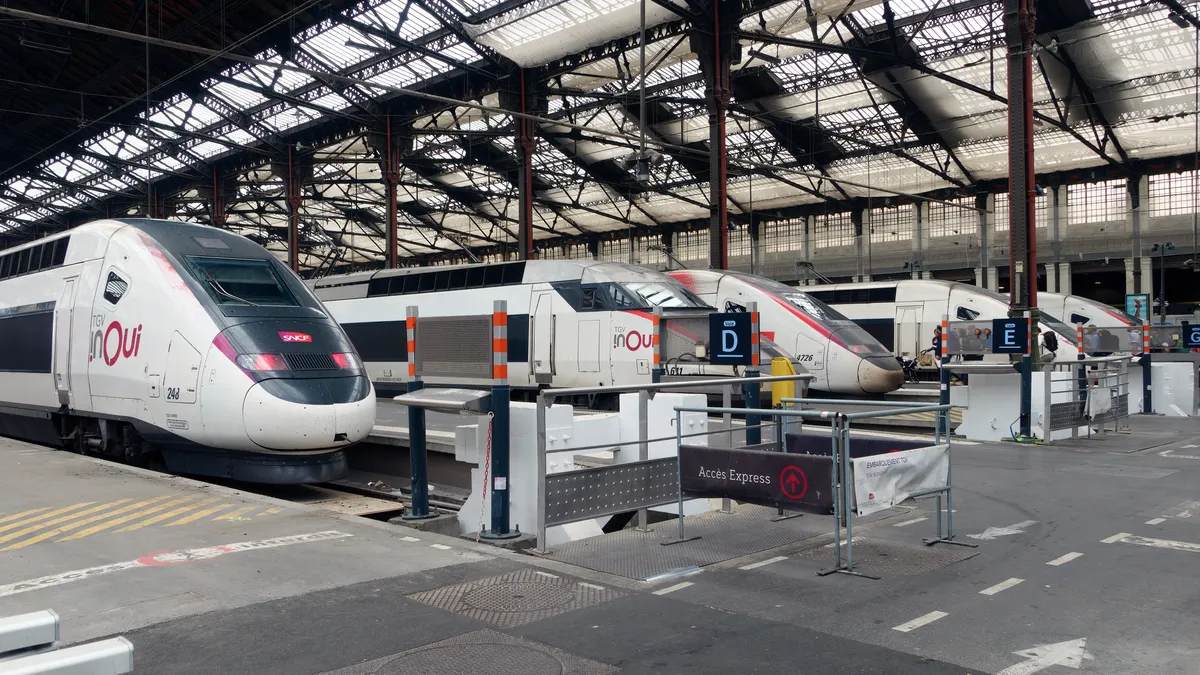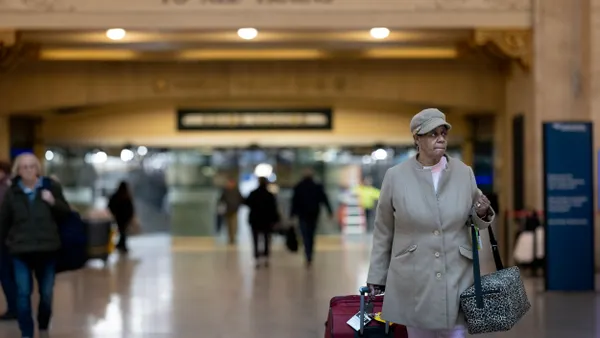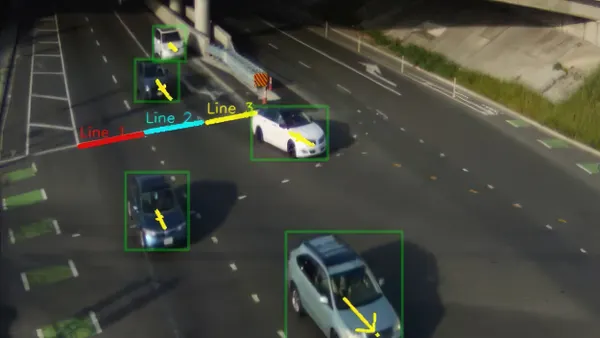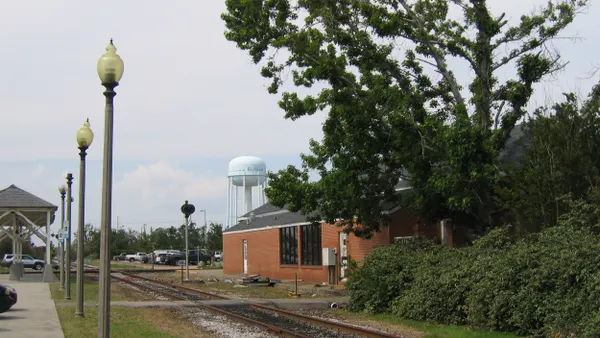In Japan, China and many parts of Europe, travelers regularly ride on trains that reach speeds of 200 mph or more. By comparison, Amtrak’s Acela train, the fastest train in North America, reaches a maximum speed of just 150 mph for portions of its Northeast Corridor route in New Jersey, Rhode Island and Massachusetts.

U.S. Rep. Seth Moulton, D- Mass., wants America to have faster, electric passenger trains that connect cities small and large. He was first elected to Congress in 2014 and at one time served as managing director of Texas Central, a privately funded high-speed rail project aiming to link Dallas and Houston.
Smart Cities Dive spoke with Moulton to learn about his views on high-speed rail and how Congress and the private sector can make fast trains a reality in the U.S.
The following interview has been edited for length and clarity.
SMART CITIES DIVE: Why does America need high-speed rail?
REP. SETH MOULTON: In America, we have an incredibly old-fashioned, unreliable transportation system that actually encourages people to live in sprawling suburbs rather than in smart cities and sustainable downtowns. Americans who've never been on a high-speed train don't know what they're missing.
What does high-speed rail mean for the economy of cities?
High-speed rail is not just transformative for our biggest cities; it's transformative for cities and towns all across America. And it's a way to bring our country together, to show America that investment does not have to just be about our big coastal cities.
Will the bipartisan infrastructure law spur the development of high-speed rail?
The fundamental thing people need to know is that this much-celebrated bipartisan infrastructure deal is basically just a glorified highway bill. The fact that there is no dedicated high-speed rail money in the bipartisan infrastructure deal is a real black mark and it's something that we need to change, and something I'm fighting to change through the appropriations process.
What is your view on how the private sector can help develop high-speed rail projects?
The amazing thing about high-speed rail is it makes so much economic sense that the private sector wants to help develop it. High-speed rail is so efficient that the private sector across the globe gets involved in these projects, and that makes it a great opportunity here in America for public-private partnerships.
Now, understand that the competition is heavily subsidized. We heavily subsidize our roads and our airports. So it's not a level playing field and that's why we need some federal government involvement to get high-speed rail started.
Does Amtrak have a role to play in developing high-speed rail?
There may be a role for Amtrak, but Amtrak has to prove that it can have a role. Amtrak does not have a single stretch of high-speed track anywhere in America after being in existence for over 50 years. And by the way, don't let them tell you that the Northeast Corridor is high-speed because it would not meet the international definition for high-speed rail.
The United States has some of the highest construction costs for transportation projects in the world, which can make these ambitious projects prohibitive. What can Congress do to alleviate that?
One of the fundamental drivers of high construction costs in America is our extensive environmental review process. Now if you're building a 12-lane highway, then I'm all for very intensive environmental reviews because it's going to have a very significant environmental impact. But it's pretty ironic that we make high-speed rail projects that are so fundamentally good for the environment go through the same onerous environmental reviews as highway or airport projects.
I think it's a great political opportunity. Republicans want to cut environmental reviews, Democrats don't want to, but they want more high-speed rail. Let's come together on a compromise. Use high-speed rail as an example of where you can have expedited environmental reviews to reduce construction costs and ultimately you're doing something that's fundamentally hugely positive for the environment.
After decades of talk about high-speed rail in the U.S. with few results, is it realistic to think that we will one day see bullet trains running in America?
This is not a pie-in-the-sky idea. Everyone is doing it except us. We need to catch up with the rest of the world. And I do believe that once we have one true high-speed railway carrying passengers in America, a lot more Americans will demand it.
For more on the U.S.’s history with these efforts, see Smart Cities Dive’s timelines of high-speed rail projects.











